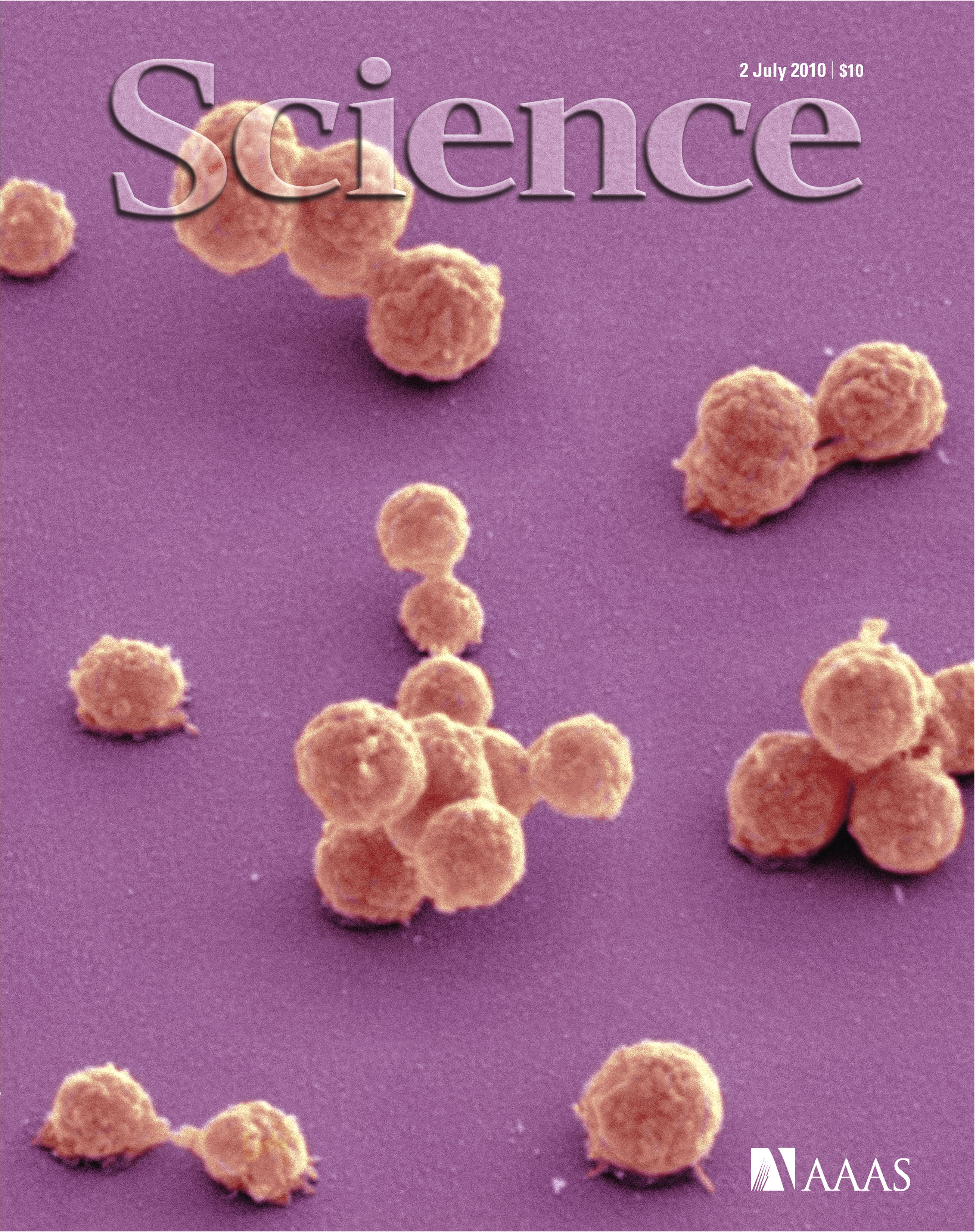Research Highlights
NCMIR Scientists Provide the First Glimpse of Synthetic Life
May 2010
Pioneering geneticist J. Craig Venter and colleagues announced the creation of the first synthetic life form, Mycoplasma mycoides JCVI-syn1.0 at a press conference in Washington, D.C. and NCMIR researchers were entrusted with obtaining the first images of this new organism. The synthetic genome of the new organism is based on that of the native bacterium Mycoplasma mycoides that the team reduced to the bare essentials needed to sustain life and allow self-replication. While this first synthetic organism is a proof of concept, the technology developed to create it holds great promise for future applications. This work has wide ranging implications for society with one of the ultimate goals being to create organisms capable of carrying out highly specialized tasks such as acting as miniature refineries to produce ethanol or other petroleum substitutes, to produce vaccines and medicines and even for environmental bioremediation of pollution. Images obtained by Thomas Deerinck and Mark Ellisman of NCMIR were used in the July 2, 2010 Science article outlining this work and one was featured on the journal cover. The cover image above was recorded using a Hitachi SU6600 scanning electron microscope and the cells are magnified by about 25,000x
Full text: http://www.sciencemag.org/cgi/content/full/329/5987/52
Related Publication
Daniel G. Gibson, John I. Glass, Carole Lartigue, Vladimir N. Noskov, Ray-Yuan Chuang, Mikkel A. Algire, Gwynedd A. Benders, Michael G. Montague, Li Ma, Monzia M. Moodie, Chuck Merryman, Sanjay Vashee, Radha Krishnakumar, Nacyra Assad-Garcia, Cynthia Andrews-Pfannkoch, Evgeniya A. Denisova, Lei Young, Zhi-Qing Qi, Thomas H. Segall-Shapiro, Christopher H. Calvey, Prashanth P. Parmar, Clyde A. Hutchison, 3rd, Hamilton O. Smith, J. Craig Venter. Creation of a bacterial cell controlled by a chemically synthesized genome. Science. 2010 July 2; 329(5987): 52–56. Published online 2010 May 20. doi: 10.1126/science.1190719.

